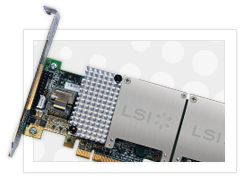Wouldn't you like to have a more solid and reliable disk subset? Whether it’s hardware failover or improved Input/Output performance, a RAID solution is definitely the way to go. RAID (Redundant Array of Independent Disks) is a method to integrate multiple disks into a single array to achieve different performance goals. RAID options are available with the purchase of any dedicated server. Use our RAID calculation tool to compare or configure RAID options and drive sizes to increase your server's performance! For the best optimized configuration, we recommend selecting similar drive sizes.
